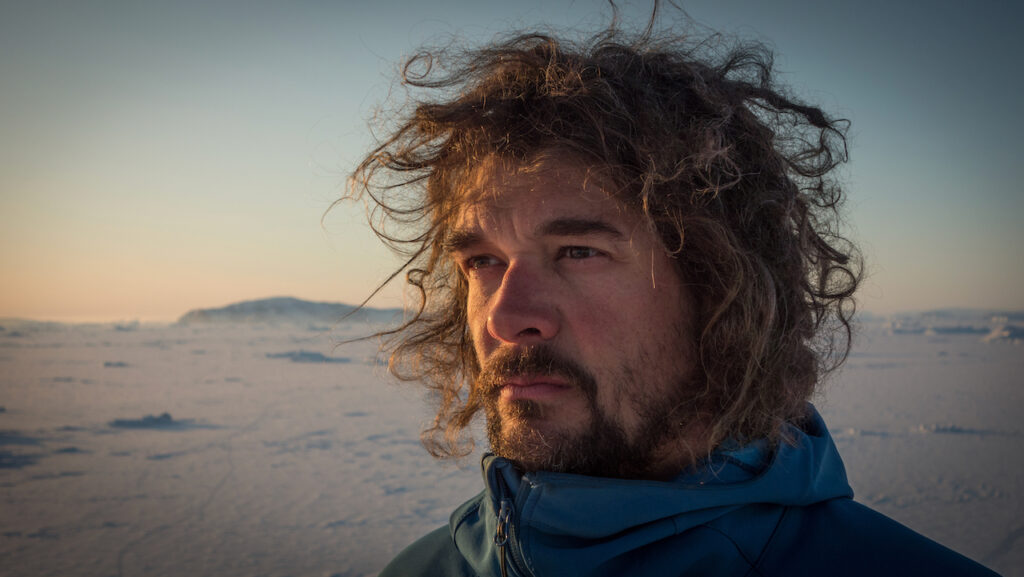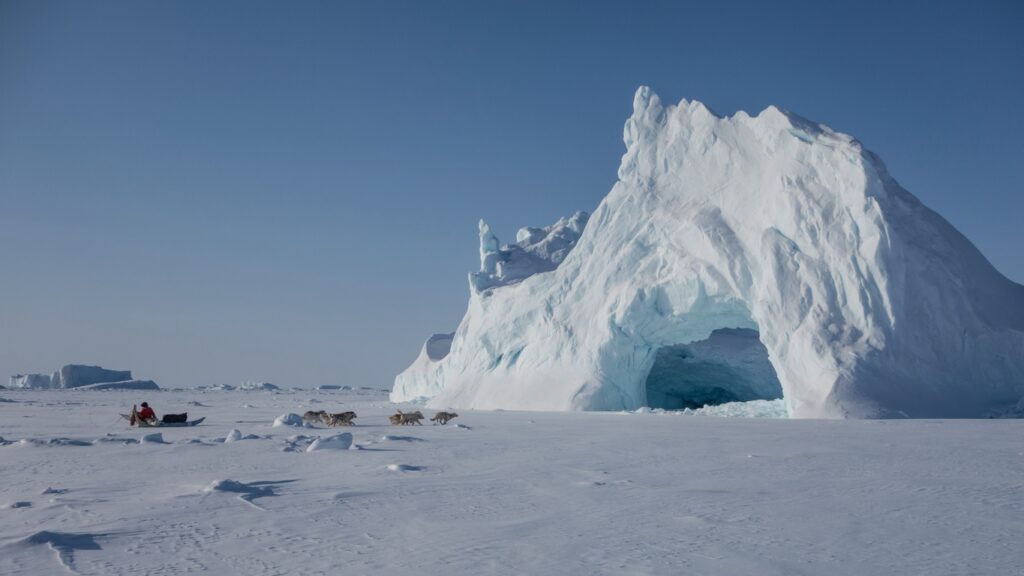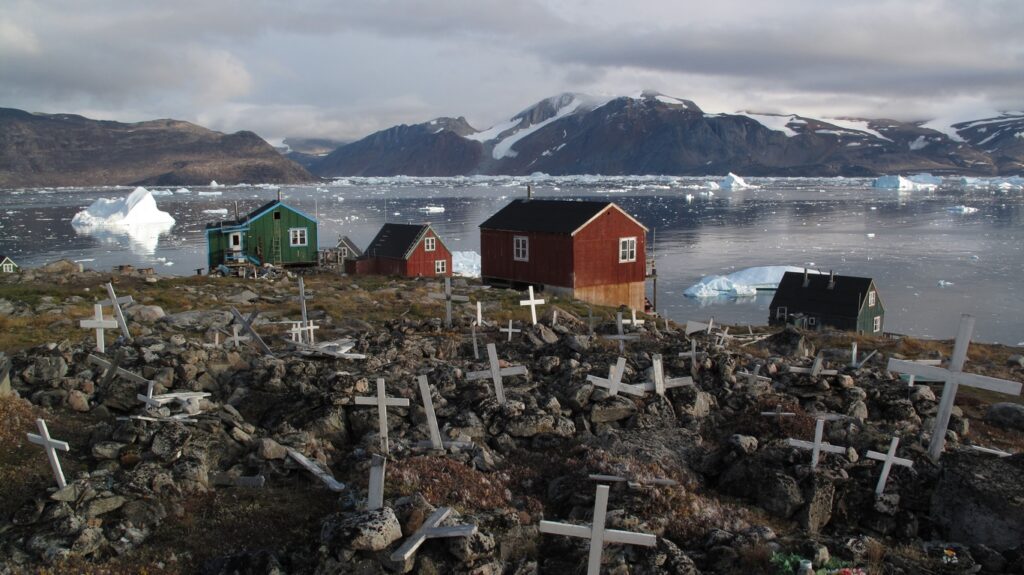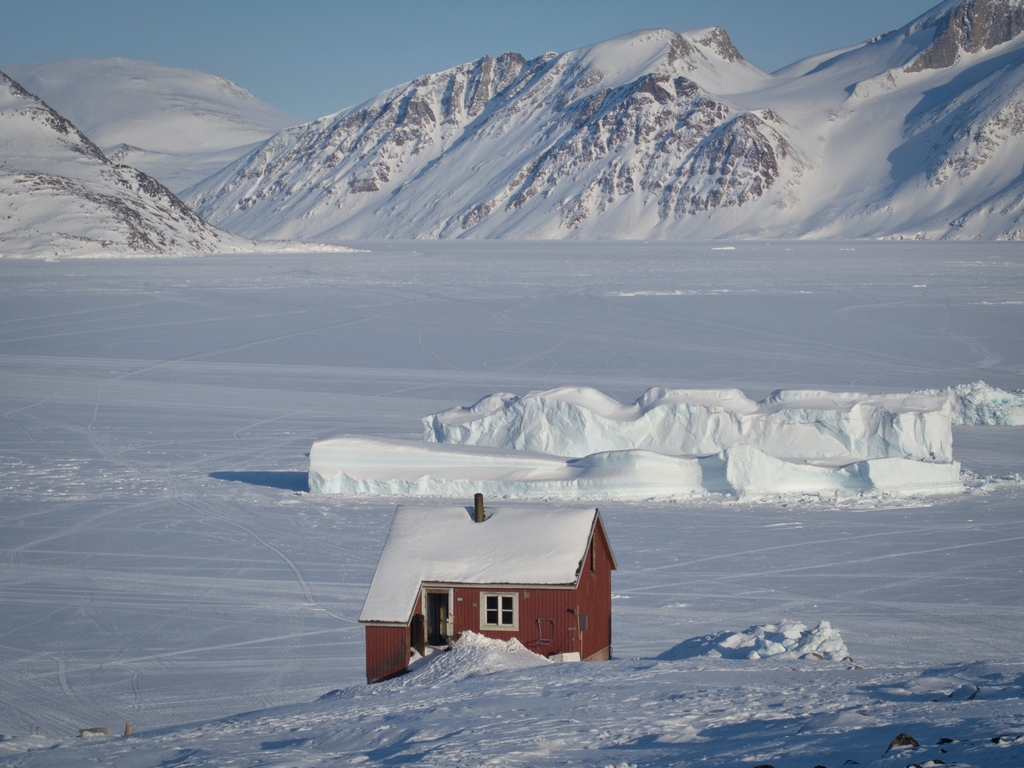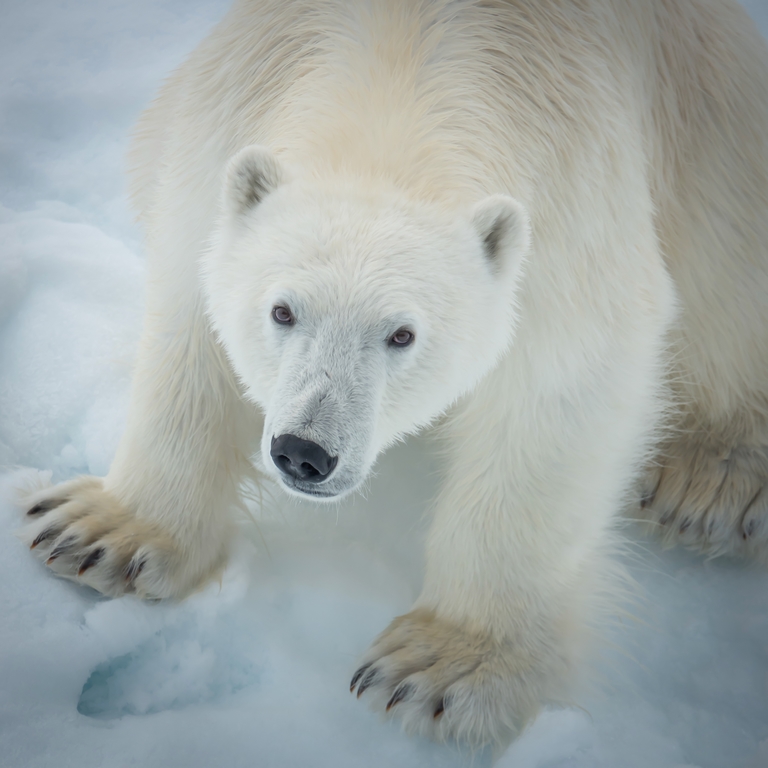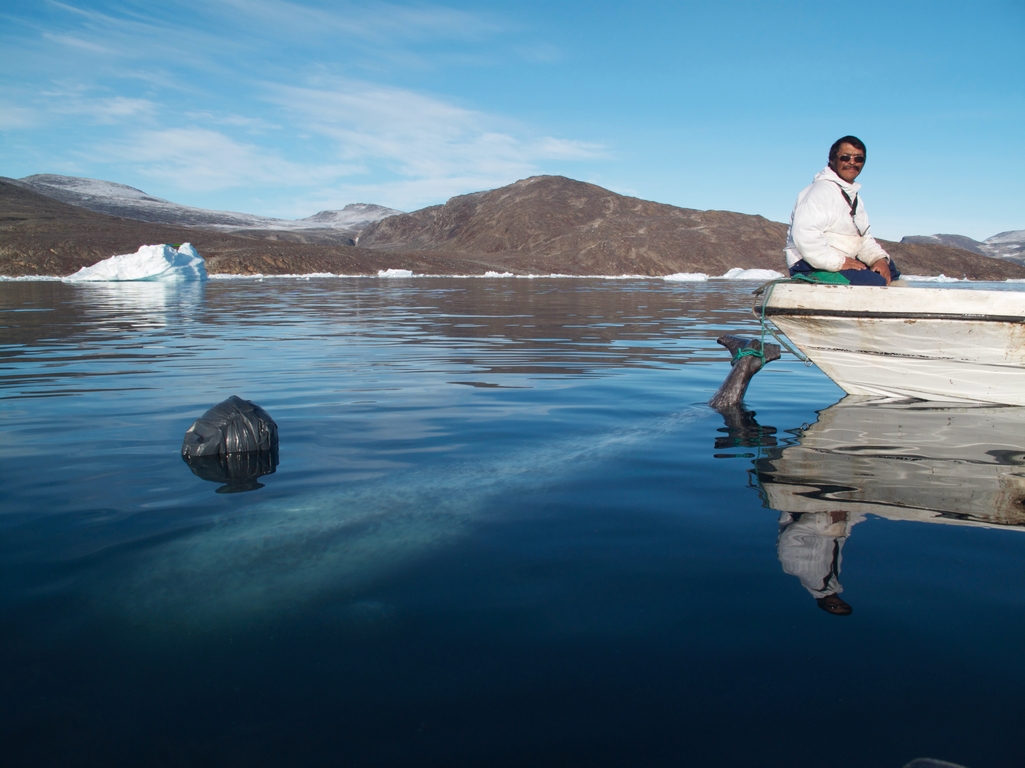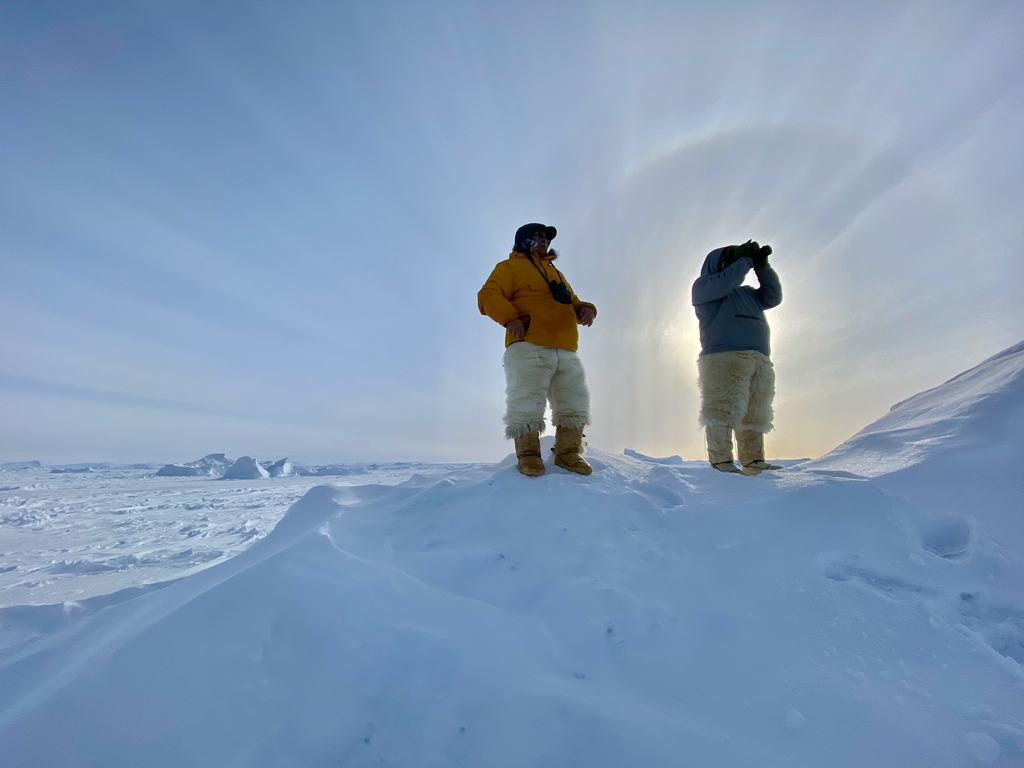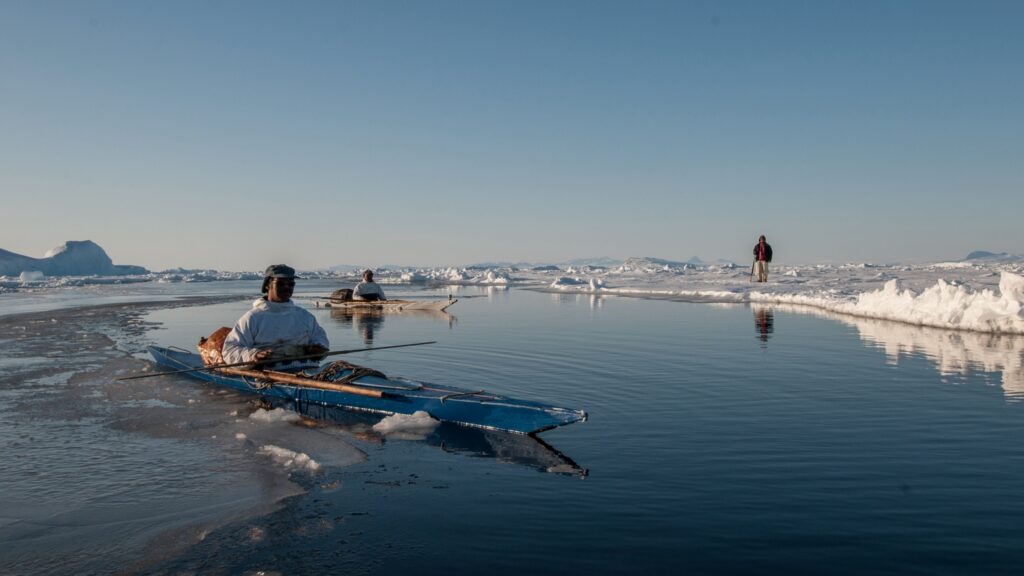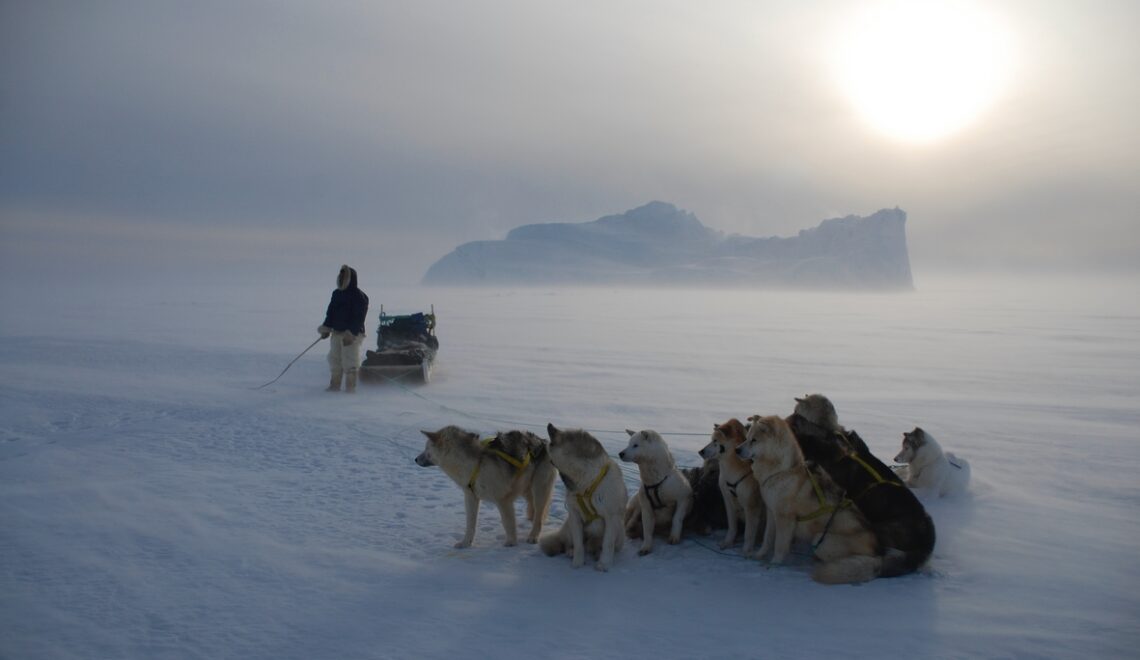
Leader of over a hundred expeditions and founder of Sedna (1), Nicolas Dubreuil is one of the world's leading polar specialists. He is the author of the books: Aventurier des glaces (2) and Akago (3). In the course of his adventures, "Niko", as his Inuit friends call him, has forged unique ties with bear, seal and narwhal hunters. Meet Niko.
Can you tell us a little about your background?
For 30 years now, I've been touring the polar regions as an expedition guide. I take with me athletes, travelers, scientists and film crews. In the beginning, I guided polar expeditions in parallel with my studies and my job as a teacher-researcher in computer science at the University of Strasbourg. Following an accident on the ice floe in 2001, while on a ski expedition in northern Greenland, I decided to leave the university and live a life of adventure. After several years exploring the Arctic and Antarctic, I decided to buy a small house in the village of Kullorsuaq, in North Greenland at the foot of the famous Melville Bay.
How did you come to hunt?
By accompanying indigenous populations. I've always hunted and fished for food and clothing - the only purpose for killing the animal, in my view. I've taken part in every possible hunt (bear, narwhal, caribou, muskox, seal, walrus, partridge, etc.). Fundamental point: it's the only way to survive in these regions. You only have to spend a few days in Greenland to understand that the only way to live there is the way it has been for thousands of years.
How is life in Kullorsuaq?
Kullorsuaq is the most extreme village. It takes more than 4 different planes, a helicopter and, in the best conditions, at least 3 days to get there. Kullorsuaq's remoteness has enabled it to maintain a life that is as traditional as it is connected. The main jobs are hunting and fishing, but everyone has a cell phone, so they can use social networks to communicate.
Moving to Kullorsuaq gave me the chance to discover a way of life close to the stories of Jean Malaire and Paul Emile Victor. When I arrived in Kullorsuaq, there were hardly any snowmobiles, only dogs and sledges. Bear and narwhal hunting is traditional in this village. Bears are tracked by sled and narwhals are harpooned from traditional kayaks, often made from wood salvaged from pallets and covered in sealskin. Today, sealskin has been replaced by nylon or even plastic, but the kayak is still built according to the kayaker's morphology and the animals it will be used to hunt.
What is the Inuit relationship with nature?
What struck me most when I arrived in Kullorsuaq was the Inuit's relationship with their environment and access to resources. Even though they are almost all Protestant, animism is still very much present, and their relationship with animals is different from anything I had experienced in Europe. As Philippe Descola says, nature doesn't exist here. Everything is nature. And as Charles Stépanoff (4) explains, the Western dichotomy between the pet animal, which is treated like a child, and the resource animal, which is consumed, doesn't exist. Here, the animal is treated as the equal of man in a 3rd version, undoubtedly much more respectful.
I remember one moment when this particularly struck me. It was late September, the snow was starting to settle and the temperature was dropping. After the excitement of summer and the permanent day, life was returning to normal. I was in the only little store doing my shopping, chatting quietly with everyone, when someone came running in, shouting " Qilalukat ! Qilalukat !» – Beluga, Beluga !
At the same time, everyone in the store drops their bags, stops talking and runs out. Even the cashier abandons his post! Something particularly important is happening. When I leave the store, an incredible frenzy has taken over the village. Everyone is running around, rushing to the little jetty, jumping into the boats and starting the engines. Ole, my best friend, walks past me, mimicking the movement of the belugas, grabbing me by the arm and urging me to come along.
I jump into his boat, and he passes me the harpoons, rifle and rope. I start the engine and a dozen or so small boats head out to sea. Someone from another village has just posted on Facebook that they have seen herds of belugas heading towards Kullorsuaq. After the deafening noise of the engines, there is complete silence. We all end up in the same place, in the middle of the sea. Everyone communicates by gesture from boat to boat. Impossible to talk about anything. Their eyes are riveted to the binoculars, or their hands are on the harpoon, scanning the horizon. It's a waiting game. Now everyone is looking for a white back amidst the drifting ice floes. The cold is much more biting, and the wind is picking up. Everyone dresses more warmly. We speak in hushed tones, a sort of uneasiness floating around. No one dares utter the word beluga until a gasp wakes everyone up. After several hours of stalking, 3 boats manage to capture a beluga. There's food for everyone.
Back in the village, the only tractor pulls the beluga and installs it right in the middle of the kindergarten. The whole village is there, from 4-year-olds to the elders, the same frenzy grips the inhabitants, knives in hand. The skin is cut off, the famous matak and it's time for a live tasting of this particularly sought-after, vitamin-rich delicacy. The animal is stroked and a piece of skin is cut off. Eating directly from the animal allows you to experience its power.
Then comes the rigorous cutting: the caudal fin and left pectoral fin for the one who saw it, the flanks for the one who harpooned it, the head for the one who killed it, etc. All the skin is cut with surgical precision and distributed among all the villagers. Matia, one of the elders, opens the beluga and invites the children to come and have a look. Blood is everywhere. Matia plunges his hands into the animal's entrails and pulls out each organ, explaining its function to the children. A biology lesson like I've never had before.
Inuit: Hunting as a means of transmission?
Yes, a completely mind-blowing anatomy and biology course in the middle of the village. Here, the animal is revered for what it brings to the whole community. It is respected, killed and eaten to the last morsel. This communal hunting is necessary and shared by all. It's a relationship with the animal that I didn't know.
The isolation of this village means very few resources. The last supply ship to pass through Kullorsuaq and refill the store is scheduled for early November, the next one for July, 7 months later. In the meantime, the bad weather, the polar night and the ice will completely isolate the village and its inhabitants from the rest of the world. Without the use of local resources, it is impossible to provide food for its 400 inhabitants. And jobs at the school, bank or store - the only businesses in the village - will not ensure economic survival for everyone. Fishing and professional hunting, remunerated by the sale of meat and skins, are the only source of income for many of the inhabitants.
The remoteness of the village and the harshness of climatic conditions made the use of sealskin, bear skin, caribou skin or musk ox skin essential to survival! Today, no Goretex in the world exceeds the waterproofness of sealskin or the breathability of caribou skin. No ski pants are as warm and practical as polar bear pants.
In Kullorsuaq, permafrost is outcropping, trees are smaller than mushrooms, and virtually nothing grows in the soil. For 4,500 years, the Inuit have adapted to finding all the elements vital to their survival in the various animals they hunt.
In Greenland, hunting is indispensable for the most isolated villages, and if you don't have a sustainable income, you'll be dependent on this traditional hunt. Of course, people with full-time jobs (store, school, bank, etc.) can apply for hunting and fishing licenses anywhere in Greenland, albeit with a strong restriction on the game they can hunt. But they interfere a lot with full-time hunters and fishermen, because of the noise of the boats and the carelessness with regard to the traditional hunting ethic (which is also noticeable among the new generations of hunters and fishermen, unfortunately).
Is there a "Danization" of local Greenlandic populations?
Since 1953, Greenland has been a province of Denmark. So, to achieve economic independence from Denmark, the urban Greenlanders gave priority to the country's wealth. They rushed to develop the economy and infrastructure and centralize wealth and development in the big cities, in order to achieve economic growth that the rest of the world would consider sufficient and could invest in. This image of Greenland reflects the vision of most people living in big cities. They focus on their families, their well-being. There is competition for jobs and better housing. Wealthier companies and individuals are rushing to invest in as many apartments as possible, ahead of the opening of transatlantic airlines from Nuuk and Ilulissat. Yet there are so many unmet needs in health and housing, whether for families who don't have enough income or for those who are forced to move to bigger cities because they have no way of earning money in the uninvested towns.
So there's a slow, forced centralization that's turning traditional hunting cultures into big-city leisure activities. I have the impression that part of the soul of those proud Greenlanders I met a few years ago is being lost to the sale to the highest bidder of the experience of hunting as a business, rather than hunting as a necessity of life, where the animal is shared with the community.
In the age of intertwined social democracy and capitalism, we don't hear many voices from the small villages where hunters and their families should have access to better health and the means to develop their villages autonomously.
How do you see the future of these isolated villages?
Maintaining life in the small villages of the Arctic means maintaining hunting. I wouldn't say that hunting is useful in the Arctic, it's simply indispensable!
Without traditional hunting in qajaq (kayak) and in qimusseq (sled) in the villages, there would be no villages at all in North Greenland. The Inuit of Northwest Greenland have always lived as nomads, following the animals and coordinating the seasonal hunt with, of course, the help of Sila, weather (in the sense of meteorology).
Interview by Brigitte Postel
Photos : Nicolas Dubreuil
1- Sedna, goddess of nature for the peoples of the Arctic, is a company created to work with indigenous populations and scientists to organize expeditions that make sense and meet the needs of both. https://sedna-explore.com/
2 - Aventurier des glaces, Nicolas Dubreuil, Michel Moutot, 2012, Ed. de la Martinière.
3 - AKAGO Ma vie au Groenland, Nicolas Dubreuil, Ismaël Khelifa, 2016, Ed. Robert Laffont.
4 - Charles Stépanoff is an anthropologist, director of studies at the École des hautes études en sciences sociales and member of the Laboratoire d'anthropologie sociale at the Collège de France. His books include Voyager dans l'invisible (2019, 2022), Techniques chamaniques de l'imagination (2019, 2022) and L'Animal et la Mort (2021). Travelling the invisible (2019, 2022), Shamanic techniques of the imagination (2019, 2022) and The Animal and Death (2021).

